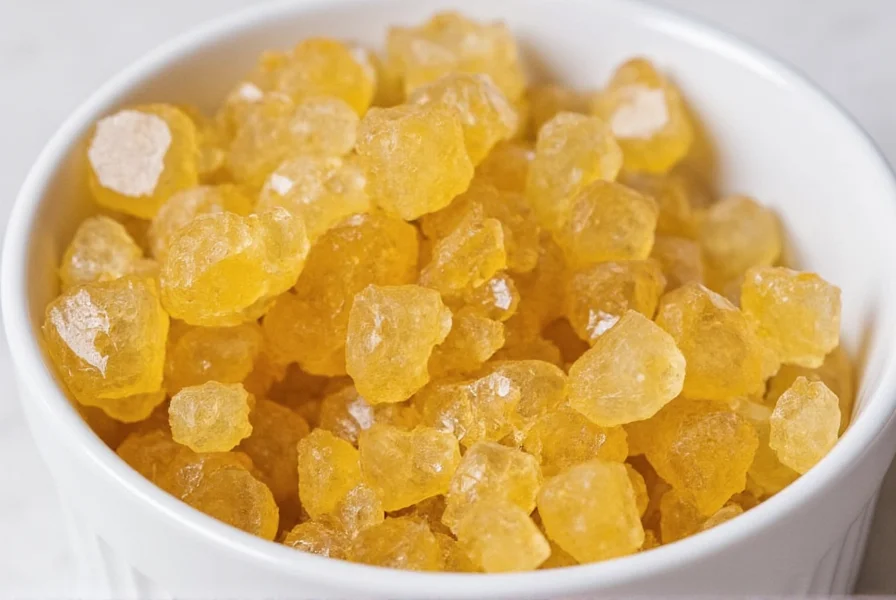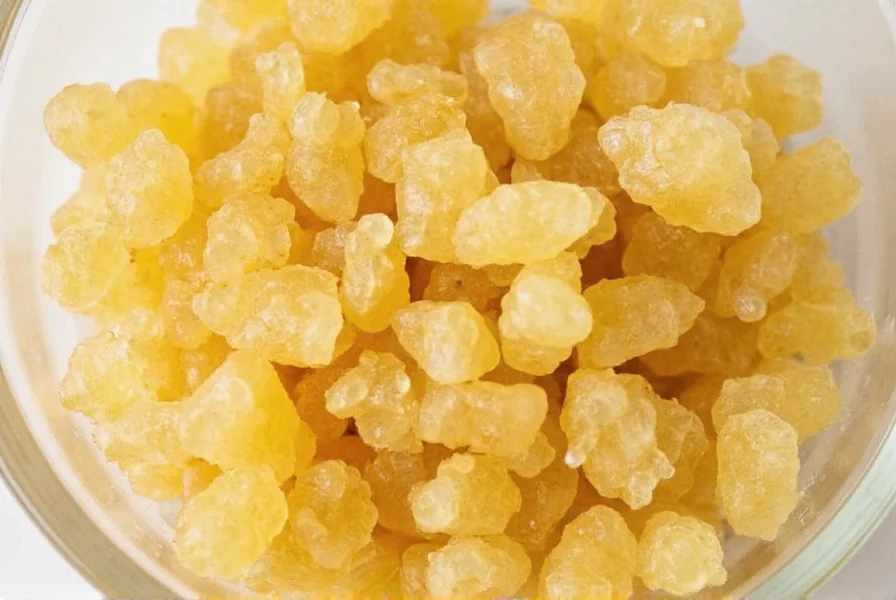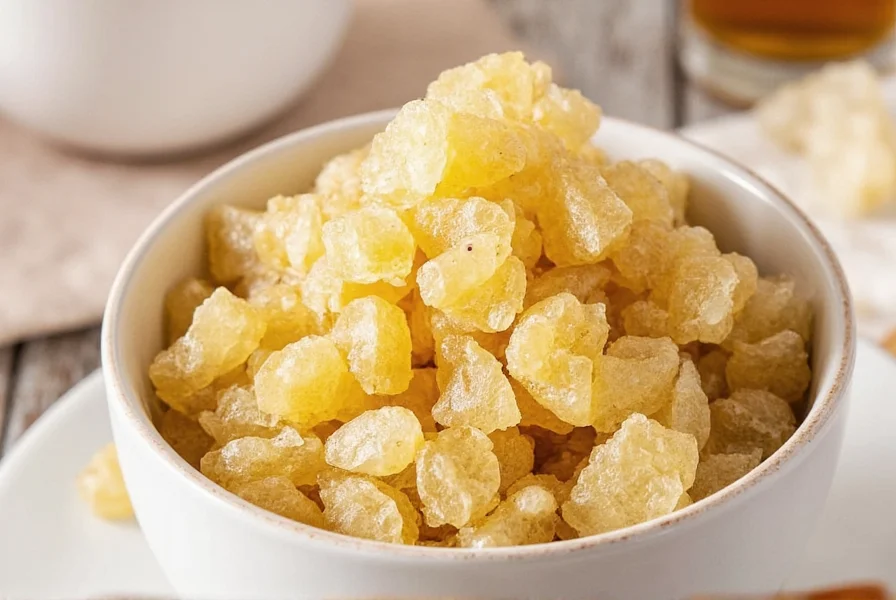For health-conscious consumers seeking natural wellness solutions, ginger tea crystals represent a practical evolution of traditional ginger consumption. These concentrated forms preserve gingerol—the active compound responsible for ginger's characteristic flavor and potential health benefits—through careful dehydration processes that maintain bioactive properties while eliminating moisture that causes spoilage.
What Exactly Are Ginger Tea Crystals?
Ginger tea crystals consist of purified ginger extract processed into soluble powder or crystal form. Manufacturers typically start with fresh ginger root, extract the juice or create a concentrated decoction, then remove water content through freeze-drying or spray-drying techniques. The resulting product contains 80-95% ginger compounds by weight, significantly higher than fresh ginger's natural concentration.
Unlike ginger powder—which simply grinds dried ginger root—tea crystals undergo additional processing to isolate water-soluble components. This creates a product that dissolves completely without sediment, offering immediate bioavailability when prepared as tea. The crystallization process also concentrates gingerols and shogaols, ginger's primary bioactive compounds, potentially enhancing their effectiveness compared to less processed forms.
| Ginger Form | Shelf Life | Preparation Time | Gingerol Concentration |
|---|---|---|---|
| Fresh ginger root | 2-3 weeks refrigerated | 5-10 minutes | 0.5-3.0% |
| Ginger powder | 2-3 years | 2-3 minutes | 1.5-4.0% |
| Ginger tea crystals | 3-5 years | 30 seconds | 5.0-15.0% |
The Science-Backed Production Process
Creating high-quality ginger tea crystals involves precise temperature control to preserve therapeutic compounds. The process begins with selecting mature ginger rhizomes containing optimal gingerol levels. After thorough cleaning, manufacturers extract ginger juice through pressing or create a concentrated decoction by simmering grated ginger.
The critical phase involves dehydration. Freeze-drying maintains the highest gingerol content by removing moisture at sub-zero temperatures under vacuum, preserving volatile compounds that degrade with heat. Spray-drying offers commercial efficiency by atomizing liquid ginger extract into a heated chamber, where fine droplets rapidly dry into powder. Both methods produce shelf-stable products, though freeze-dried crystals typically retain 20-30% more bioactive compounds according to Journal of Food Science and Technology research.

Comparing Benefits: Crystals vs. Traditional Ginger Forms
Ginger tea crystals provide distinct advantages for specific use cases while maintaining the core benefits associated with ginger consumption. Research published in Nutrients journal confirms that ginger consumption may support digestive health and reduce inflammation, with crystallized forms offering particular benefits:
- Consistent potency—Each serving delivers identical gingerol concentration, unlike variable fresh ginger
- Enhanced bioavailability—Water-soluble compounds in crystals absorb faster than fiber-bound compounds in fresh ginger
- Portability—Ideal for travel without refrigeration concerns
- Reduced waste—No peeling or grating required, utilizing nearly 100% of processed ginger
However, fresh ginger contains additional compounds like zingerone that develop during cooking, offering complementary benefits. For maximum versatility, many wellness practitioners recommend maintaining both forms in rotation—crystals for convenience and fresh ginger for culinary applications.
Practical Usage Guidelines
Preparing ginger tea from crystals requires minimal effort but benefits from technique refinement. For optimal extraction of bioactive compounds:
- Use water heated to 195-205°F (90-96°C)—just below boiling—to preserve volatile compounds
- Add 1-2 grams (approximately 1/4 teaspoon) of crystals per 8 ounces of water
- Stir thoroughly for 30 seconds to ensure complete dissolution
- Allow 2-3 minutes of steeping time for maximum compound extraction
For digestive support, consume 20-30 minutes before meals. Those seeking anti-inflammatory benefits may prefer consuming ginger tea crystals with vitamin C-rich foods like lemon, as research in Phytotherapy Research suggests this combination enhances absorption of ginger's active compounds.

Storage Recommendations for Maximum Potency
While ginger tea crystals offer extended shelf life compared to fresh ginger, proper storage remains crucial for maintaining potency. Exposure to moisture, light, and oxygen gradually degrades gingerol content. Follow these storage protocols:
- Store in airtight containers away from direct sunlight
- Maintain temperatures below 77°F (25°C)—refrigeration extends shelf life
- Use within 18 months of opening for optimal potency
- Avoid humid environments like near stovetops or sinks
A 2023 stability study in Food Chemistry demonstrated that properly stored ginger crystals retain over 85% of initial gingerol content for three years, significantly outperforming fresh ginger's two-week optimal usability window. The study also noted that amber glass containers preserved potency 15% better than clear plastic containers due to light protection.
Frequently Asked Questions
How do ginger tea crystals compare to ginger supplements?
Ginger tea crystals provide whole-plant benefits with natural compound ratios, while supplements often isolate specific compounds like gingerols. Tea crystals offer faster absorption through the digestive tract lining when consumed as a beverage, whereas supplements must dissolve in stomach acid first. For general wellness, tea crystals provide more balanced benefits; for targeted therapeutic doses, standardized supplements may be preferable under medical guidance.
Can I use ginger tea crystals for nausea relief?
Yes, ginger tea crystals can help alleviate nausea. A 2022 review in Complementary Therapies in Medicine confirmed ginger's effectiveness for various nausea types. For best results, dissolve 1 gram of crystals in warm water at the first sign of nausea. The quick dissolution allows faster absorption than chewing fresh ginger, potentially providing relief within 15-20 minutes. However, severe or persistent nausea requires medical evaluation.
Are ginger tea crystals safe for daily consumption?
Most adults can safely consume ginger tea crystals daily within recommended limits. The European Food Safety Authority suggests up to 2 grams of ginger daily from all sources. Since crystals are concentrated, limit to 1-2 grams (about 1/2 teaspoon) per day. Those with gallstone issues, taking blood thinners, or who are pregnant should consult healthcare providers before regular consumption, as ginger may interact with certain conditions and medications.
Do ginger tea crystals lose potency over time?
Yes, ginger tea crystals gradually lose potency but maintain effectiveness longer than fresh ginger. Properly stored in airtight, light-proof containers at cool temperatures, they retain over 80% of initial gingerol content for 2-3 years. Exposure to moisture, heat, or light accelerates degradation. To check potency, smell the crystals—fresh ginger crystals should have a sharp, pungent aroma. Diminished scent indicates reduced effectiveness, though they remain safe to consume.











 浙公网安备
33010002000092号
浙公网安备
33010002000092号 浙B2-20120091-4
浙B2-20120091-4